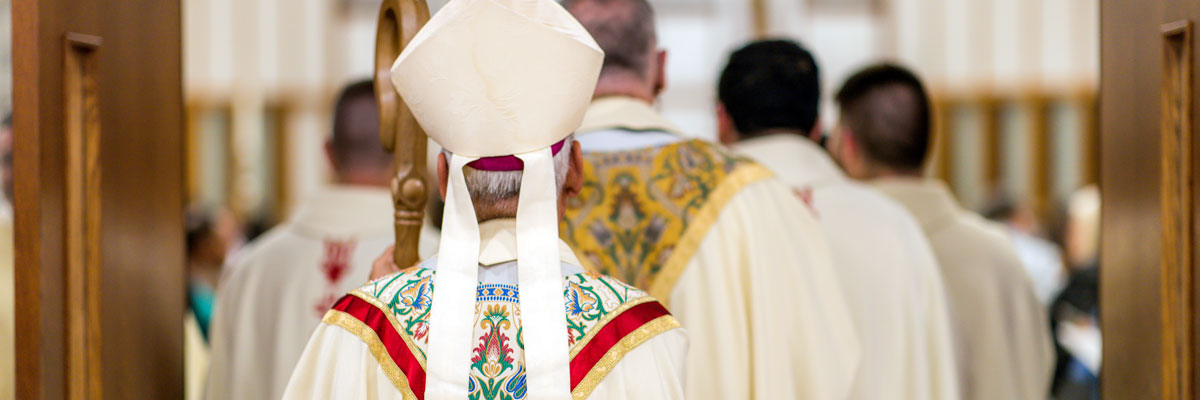Official Website of the
Catholic Diocese of Little Rock
‘The Da Vinci Code’ inaccurately claims Constantine chose Gospels
Published: July 10, 2004
By Msgr. Richard Oswald
“The Da Vinci Code,” authored by Dan Brown, has been at the top of bestseller lists for more than a year. In the introduction to the fictional murder mystery Brown states that all of the supporting elements of the story are factual. As the story unfolds one of the book’s expert heroes makes the claim that Roman Emperor Constantine suppressed as many as 80 “gospels” in the fourth century. He then commissioned a new bible containing only the four Gospels we have today and modified them to fit his agenda. In keeping with the author’s introduction all of the novel’s major players accept this as factual. What is the truth? How did the Church get the four Gospels and the remainder of the New Testament? Different authors wrote the Gospels at different times and places. There are other Christian books from that time and books that pretend to be from that period. Who decided that only the Gospels of Matthew, Mark, Luke and John belong to the list of sacred books inspired by God as normative for faith and morals? More than 100 literary works from biblical times and the three centuries that followed have been collected. Some have been known since the first century. Some, including a book known as the “Gospel of Thomas,” were discovered only 55 years ago. Most were composed after the books of our New Testament were written. Many of these books circulated among Christian communities during the three centuries between the birth of the Church and Constantine’s reign. Ultimately only four Gospels and 23 other books were recognized as belonging to the canon of Scripture. The Greek word from which our word “canon” is derived refers to a mason or carpenter’s measuring stick or ruler. The early Church took the word and used it to describe the rule of faith, the norm by which revealed truth is determined. A canonical book, then, is a book that conforms to the rule of faith. There are two major factors by which the canonicity of the books of the New Testament was determined. Were the books faithful to tradition preached by the Apostles and were they recognized as such and read and proclaimed within the celebration of the Eucharist in important Church communities such as Rome, Greece, Asia Minor and Syria? The writings of Church fathers such as Justin, Irenaeus and Ignatius show that by these criteria the Church recognized the four Gospels before the end of the second century, well before Constantine’s time. The canonical Gospels parallel one another in telling of Jesus’ baptism, calling his disciples, his teaching and healing, the days before his passion, the narrative of his passion, his resurrection and his appearances to his disciples. An examination of the “gospels” written in the second century and later shows that they differ significantly. There are two major types. One type contains nothing but sayings and teachings of Jesus with no reference to the events of his life, death and resurrection. Another type collects imaginative stories of Jesus’ childhood or his passion or the time after his resurrection. No decree by a Roman emperor was needed to give the four Gospels biblical status. They had already been recognized as such more than two centuries before. At the same time the many other “gospels” had been abandoned because they did not meet the rule of faith. Msgr. Richard Oswald is pastor of St. Vincent de Paul Church in Rogers.









